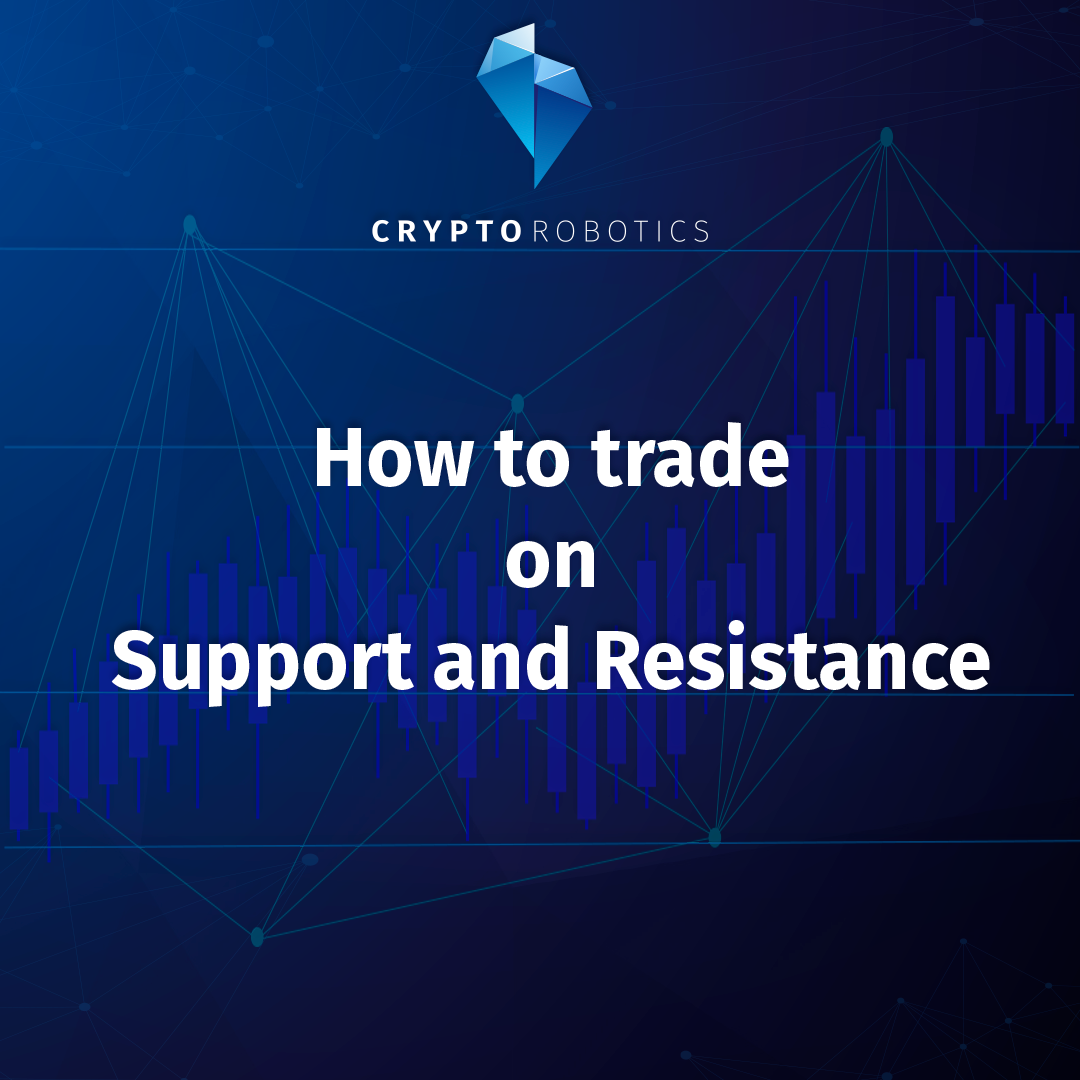How to trade on Support and Resistance

Support and Resistance are not about military actions. It is the essentials of the technical analysis of financial and cryptomarkets. Every cryptokitty should be able to draw Support and Resistance lines on the chart, otherwise he will never become a cryptotiger or even a domestic cryptocat.
What’s that all about?
- Let’s find out. The cryptocurrency price is always moving. At first sight, this movement looks chaotic but if you go further, you can find some logic.
Open the terminal and look at the bitcoin chart. We see price minimums and maximums for exact periods. Draw horizontal lines through them in the chart - it will be Support lines (on minimums) and Resistance lines (on maximums).
After reaching these lines the market trend either stops developing or reverses — so called price constraints.
Support — the price level where the ask bids become so significant so that the downward trend stops.
Resistance – the opposite situation with the sell bids and the upward trend consequently.
What to do with them?
There are three price behaviour outlooks of these inflations.
Rebounds. The price tests each level: one bid for one level and rebounding several times in a row.
Supposing we have a conditional maximum set on $100. The price achieves $99.9, reverses by some reason and decreases to $95 again. After a while this situation repeats: the price is testing the level. In such case $100 is the Resistance.
When the price reaches it, many traders believe it to be the top price and close the position to fix profit. It is the breakout that causes the price decrease.
False breakout. The price crosses the level (over the Support or under the Resistance) but it cannot fix at this position. So it returns back.
If the local minimum is $50, it is the Support. The price tests the level several times, breaks out and reaches $48 eventually.
The level seems to be broke through and the downward trend continues. But traders realise it’s time to purchase. More Buy requests appear and the price returns to more than $50. This is the Support false breakout.
True breakout. The price crosses the Support or Resistance level and follows the stable trend. An interesting phenomenon can appear in this case: mirrored levels.
Say the Resistance is on $100. The price breaks through and moves up to, let’s say, $130. Taking into account the volatility the price returns back to $100 from time to time, reaches this level several times, but doesn’t go lower.
What do we see? Right, the new Support level formed the new Resistance level. Now it is not the local maximum but the local minimum in new phase of trend development.
What makes a good level?
Support and Resistance levels can be strong and weak. The price can test the strong one many times and cannot manage to break it down: it needs visible development on market. The weak levels are more local: they are broken through and mirrored more often.
To determine the levels’ stability you should pay attention to its history. The longer the price cannot manage to break through the level the more stable it is (hey, Captain Obvious!). If there is a clear Resistance or Support level on the daily or weekly chart, such situation will be much more stable.
The second aspect is less obvious — the cryptoasset’s trade volumes that were on trade at this level.
How to trade on levels?
There are two methods.
Trade on breakout. If we set the Support on $50, which stays over the week, but suddenly we notice the stable breakout, it is time to sell the asset.
When the price goes lower you will buy the asset on minimum to sell it on the upward trend. As a result, there is a good chance to make a profit.
There is an important rule: if you are going to trade on the levels’ breakout, make sure it is not the false one. A stable price movement within two-three candles can prove the breakout.
A false breakout without proper skills is even worse than the poisonous mushroom. Having eaten it you are likely to die at once. Having lost all the savings you will suffer a long time.
Trade on rebound. We see the price goes down and our Support is still on $50. So the price, almost reaching the Support couple of times, is pulling away turning the trend upward.
It is called trend reversal. It is high time to buy the asset: it will not be cheaper but can go up in value on the new increasing trend. Having rebounded several times from the level, the price can break it out. So it is recommended to wait for several candles to make sure that is it not a mirage.
It seems to be easy but actually, it is not. You cannot trade only on levels: the market analysis includes a vast amount of other tools: price channels, trend lines, hundreds of different indicators. But even an experienced trader always utilise Support and Resistance levels to build hundreds of basic strategies.
Follow our feed, we have many more interesting materials prepared for you!
cryptorobotics.io
Download CryptoRobotics terminal:
For Mac: https://cryptorobotics.io/vers/Mac/
For Windows: https://cryptorobotics.io/vers/Windows/